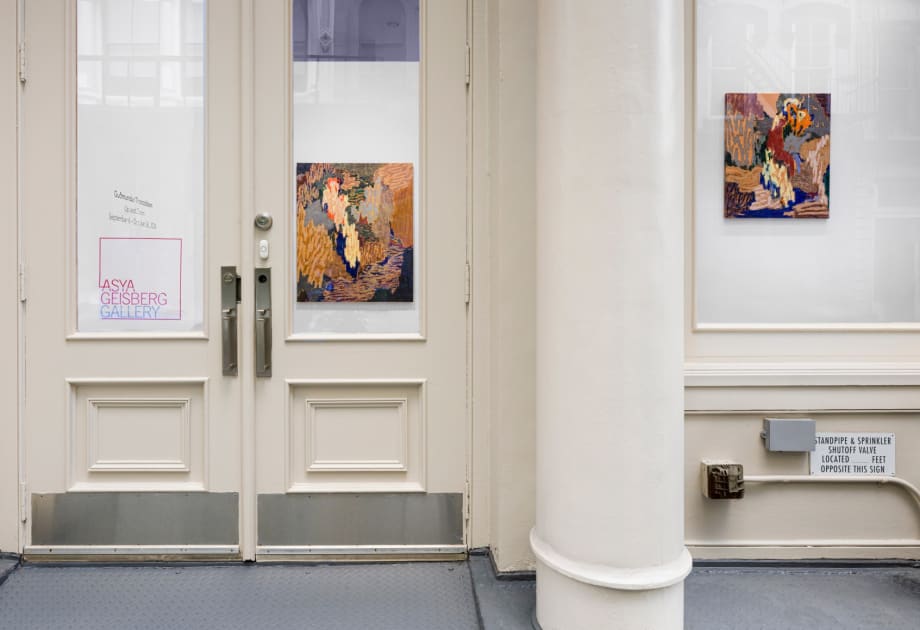In “Up and Down,” Icelandic artist Guðmundur Thoroddsen presents Rorschach-like paintings that segue back and forth from micro to macro. Lichen, fungus or rot simultaneously appear as precipice, gorge or stream. Although Thoroddsen attempts to disassociate himself with the baggage of landscape in western thought and imagination, the matter-like pigment and scumbled voids are still subjected to our emotional and spiritual experience of them. In the quest for the untainted gesture however, Thoroddsen does attain a sense of self-erasure. The artist’s hand, present but also not, coaxes into light imagery that exists in our collective subconscious, but by rendering it unfamiliar he leaves us unsure as to whether we are seeing rhapsodies in abstraction, barren environs, or the micro worlds of lichen-esque growths. As the mind’s eye remains in flux, the results are paintings that defy categorization. In Rusty Lake, one can’t help but search for a figure or an ant line of people trekking its topography, but Thoroddsen is a glorious misanthrope, people here are banished, it is only the viewer who occupies the paintings and subjects them to human regulation.
Throughout “Up and Down” Thoroddsen strives to override the fact that the eye sees cognitively and perceives within a preconceived framework, so what could be the flow of a glacier or a meandering stream is consistently disrupted, as if to stymie any potential coherence. Thoroddsen is at war here, not only with the predetermined art historical lens in which he views a landscape (or even a painting), but also with the employ in which his materials are used to depict it. In this tautological ordeal, Thoroddsen is purging the uncanny and dismantling association as soon as he commits paint to canvas, leaving the viewer to reconfigure the displaced and fragmented.
Thoroddsen’s generational vacation home is set in the Klakkeyjar islands in Breidha Fjord, an uninhabited idyll in the western region of Iceland. In recent years, visions of factories, industry and the unforgiving presence of modern urbanization have disrupted this Arcadian landscape in recurring nightmares for the artist. One wonders perhaps whether these paintings are a subconscious attempt to immortalize the untouched beauty that resides in the memories Thoroddsen fights so hard to dismantle. If “Up and Down” is an ode to an unpeopled and unspoiled world, it could also be a visual metaphor for the decay of purity both within nature and the mind of the artist. Either way, if Marcel Proust said that True paradises are the paradises that we have lost, then Thoroddsen may be reluctantly depicting his own paradise lost, whether it be the impending decline of his natural environs, or the notion of the liberated artist.
--Holly Jarrett

